
Get news, updates, & event Info delivered right to your inbox:
What are Mangroves?
Mangroves are salt-tolerant trees (halophytes) and can be found in what’s known as the coastal intertidal zone: the area between high and low tide.
What’s remarkable about mangroves is that despite being trees, they're able to thrive in salty water, sand, and low-oxygen mud. Their twisted roots and branches jut upward from the sand and water like long, slender stilts, helping to secure them against the battering of the sea and tide.
Thanks to their incredible adaptation to an environment that's considered unfit for trees of any kind, mangrove forests are critical for protecting coastlines, endangered and threatened species, people’s livelihoods, and even helping combat climate change!
Below are 10 interesting facts to help you understand what makes mangroves so unique.
Learn About Mangrove Trees!
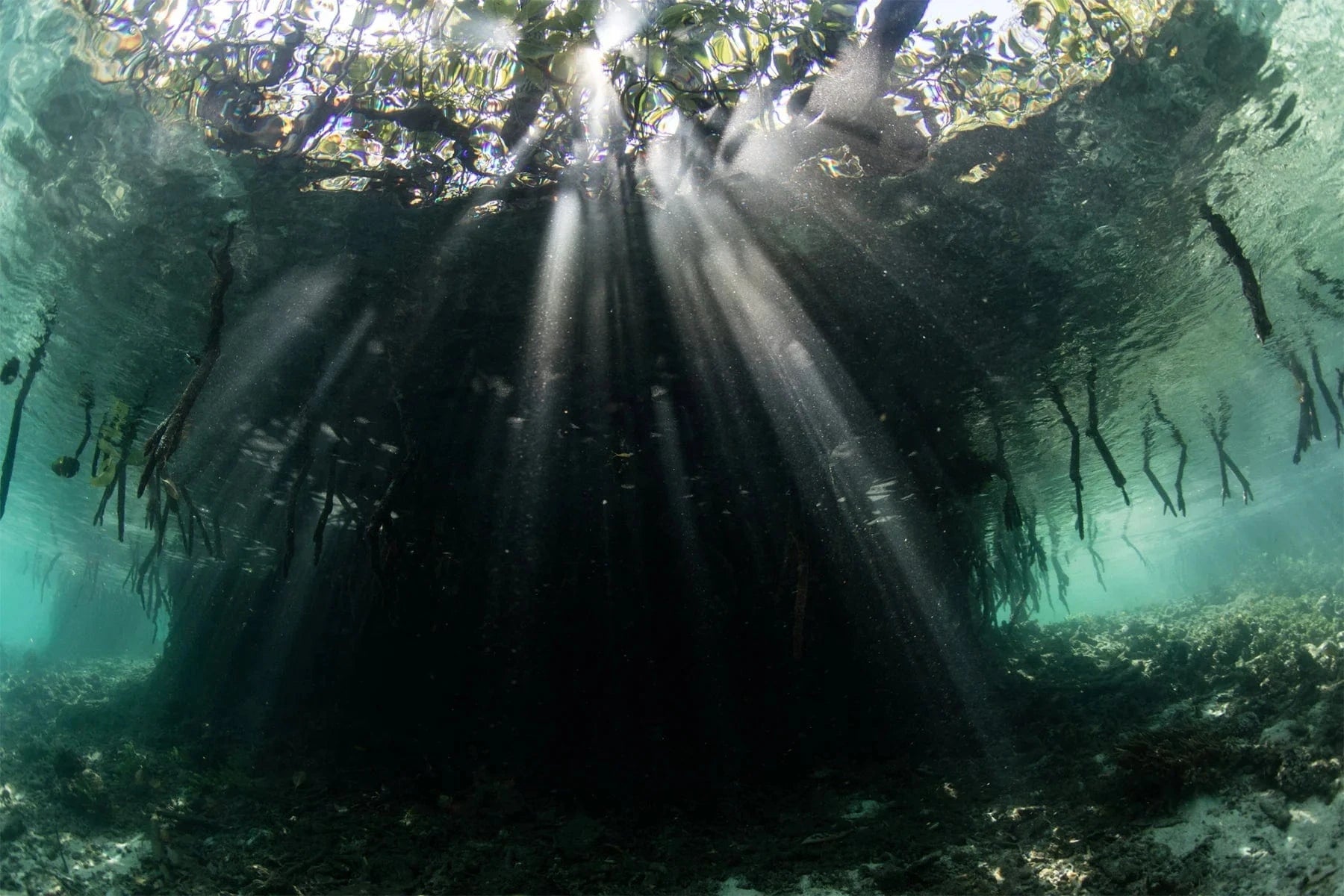
1. How do mangroves survive in saltwater?
Many species of mangrove survive by filtering up to 90% of the salt out of seawater as it enters their roots. In addition to filtering their own water source, mangrove's unique root systems help them stay upright in soft, waterlogged soils.
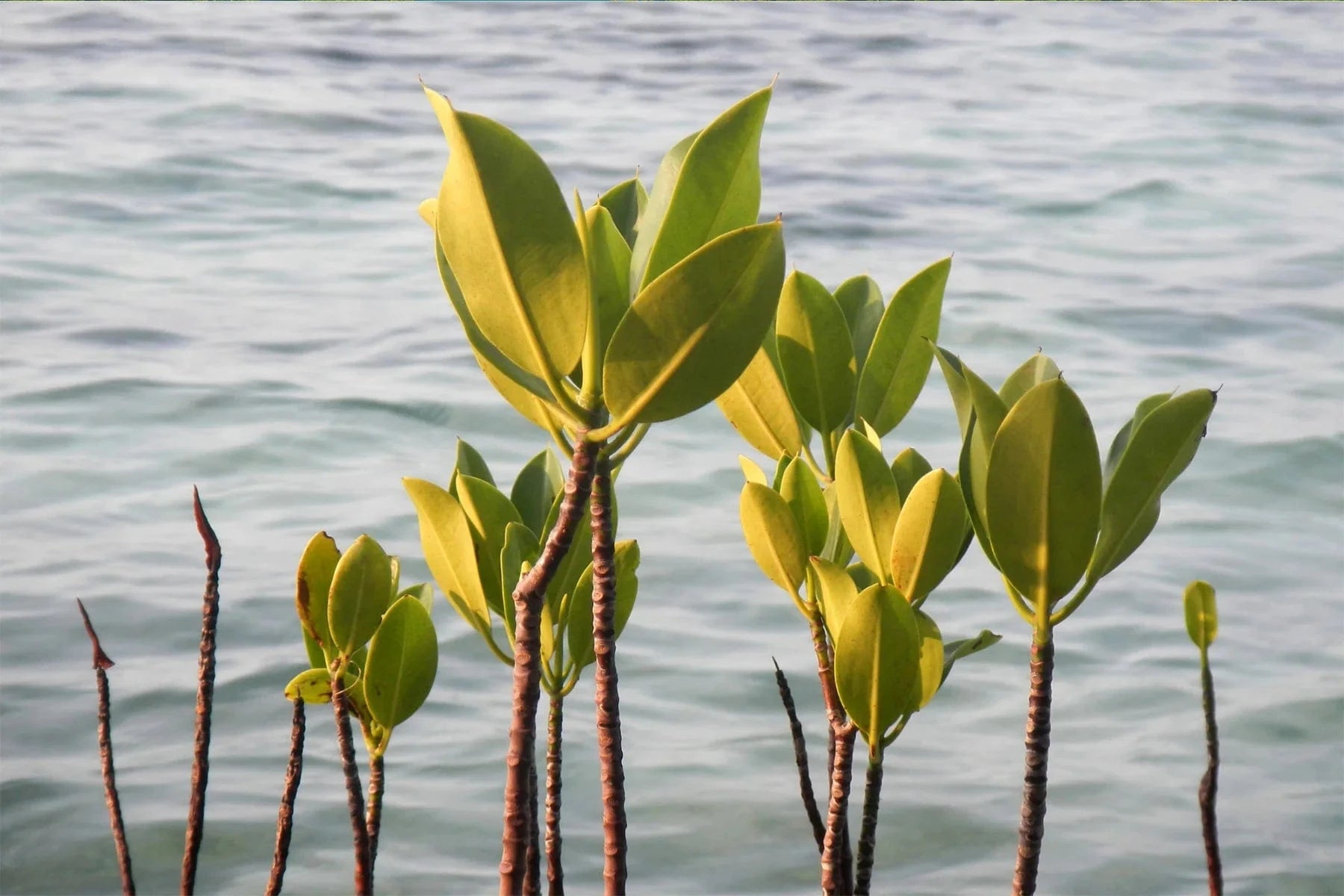
2. What are some other adaptations that allow mangroves to live in saltwater?
In addition to their roots, some mangrove species also have special leaves that help them thrive in salty or brackish water by secreting it out of leaf pores. Still other mangrove species store salt in older leaves or bark. When the leaves drop and the bark sheds, the stored salt is shedded with them.
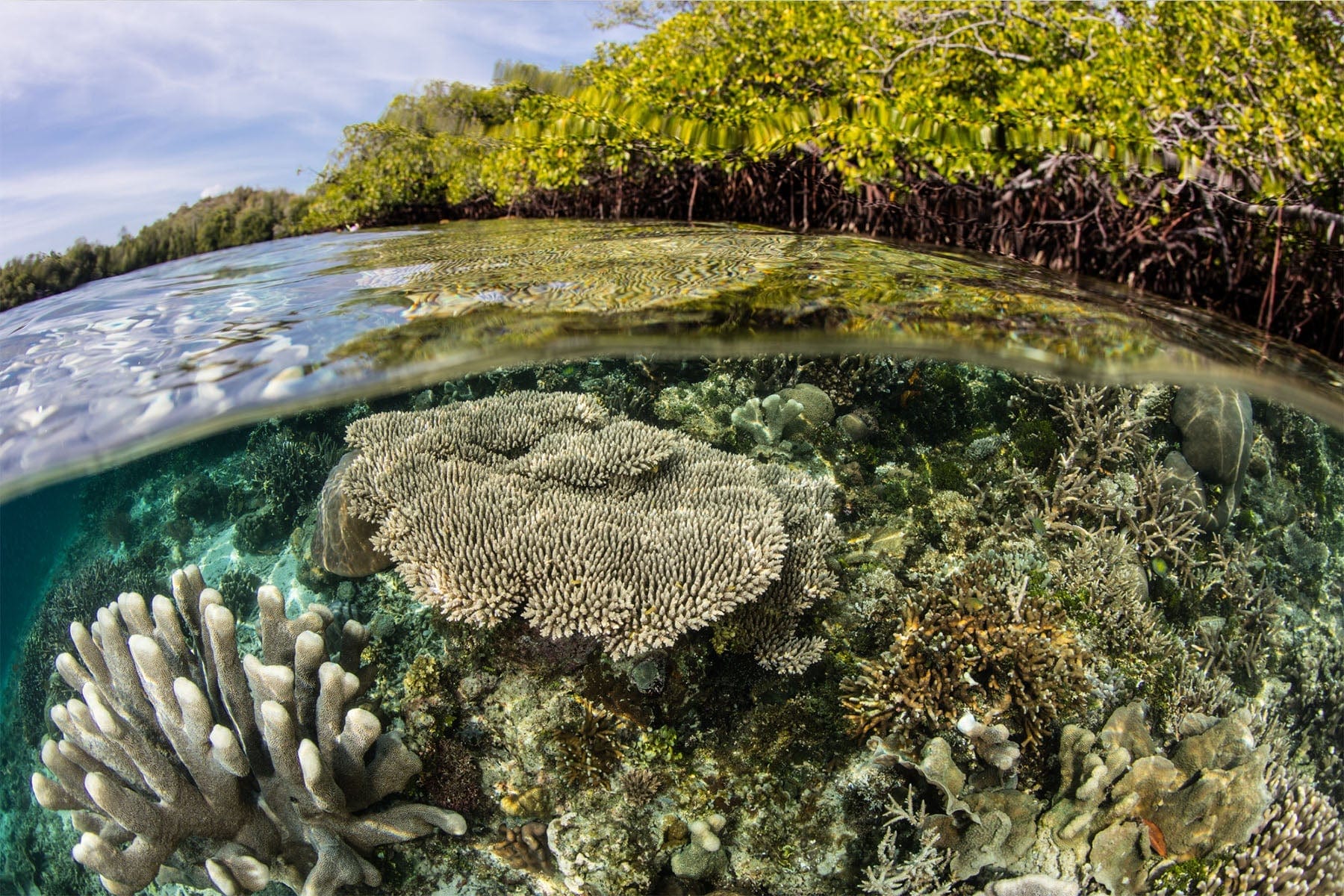
3. How many species depend on mangrove forests?
Mangrove forests shelter an estimated 1,500 species (and not just fish and shellfish!). Thanks to their intricate root systems, they provide nesting, nursery and feeding grounds for many aquatic organisms — including juvenile fish of thousands of species, oysters and mussels, mudskippers, lemon sharks, and manatees. Above the ocean surface, mangroves also provide critical habitat for cranes, eagles, monkeys, and even tigers.
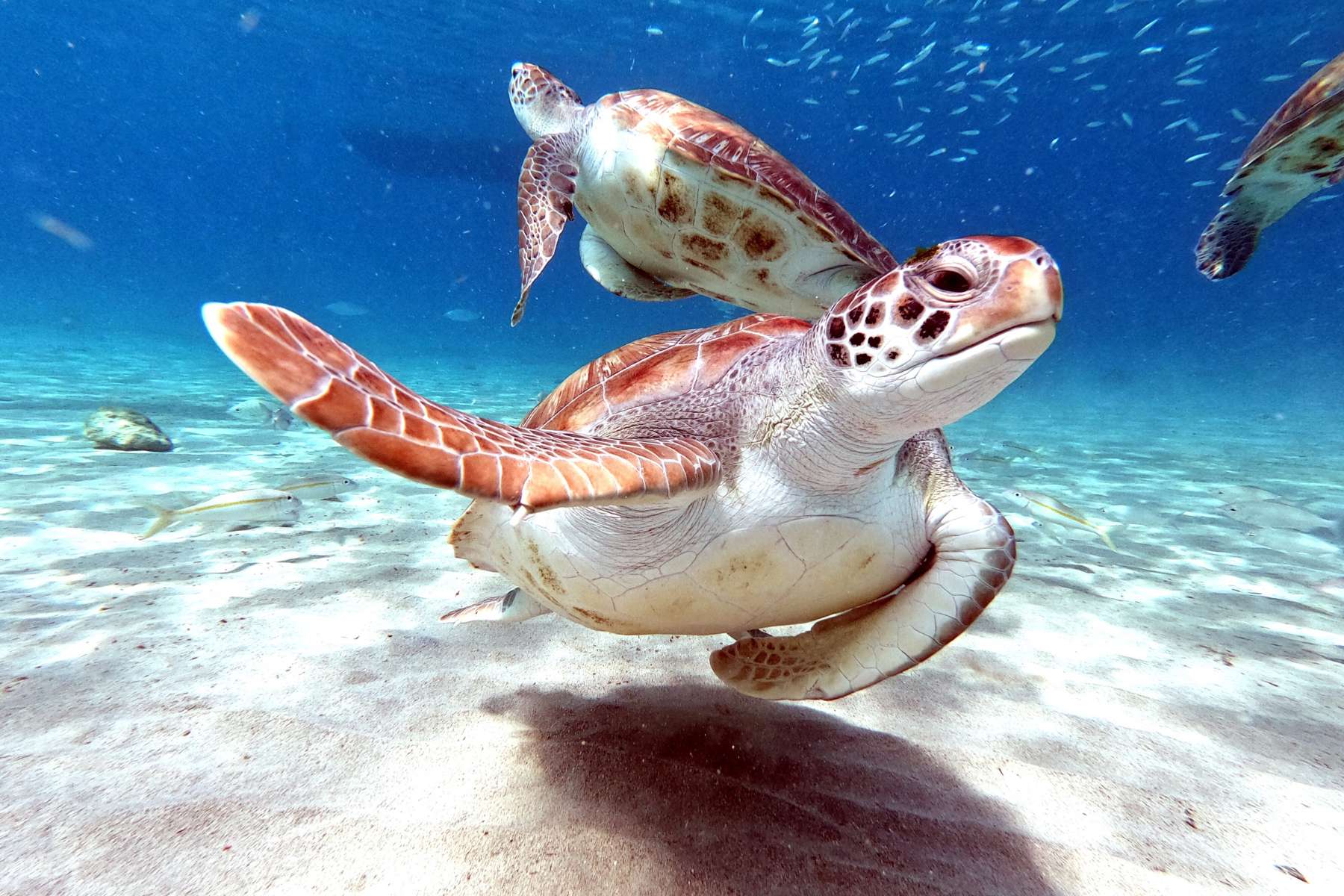
4. How many endangered species depend on mangroves?
15% of species associated with mangroves are threatened with extinction. The UN Environment Programme's "Decades of Mangrove Forest Change" report breaks it down further:
- 50% of mangrove-associated mammals
- 22% of mangrove-associated fish
- 16% of mangrove-associated plants
- 13% of mangrove-associated amphibians
- 8% of mangrove-associated birds and reptiles.
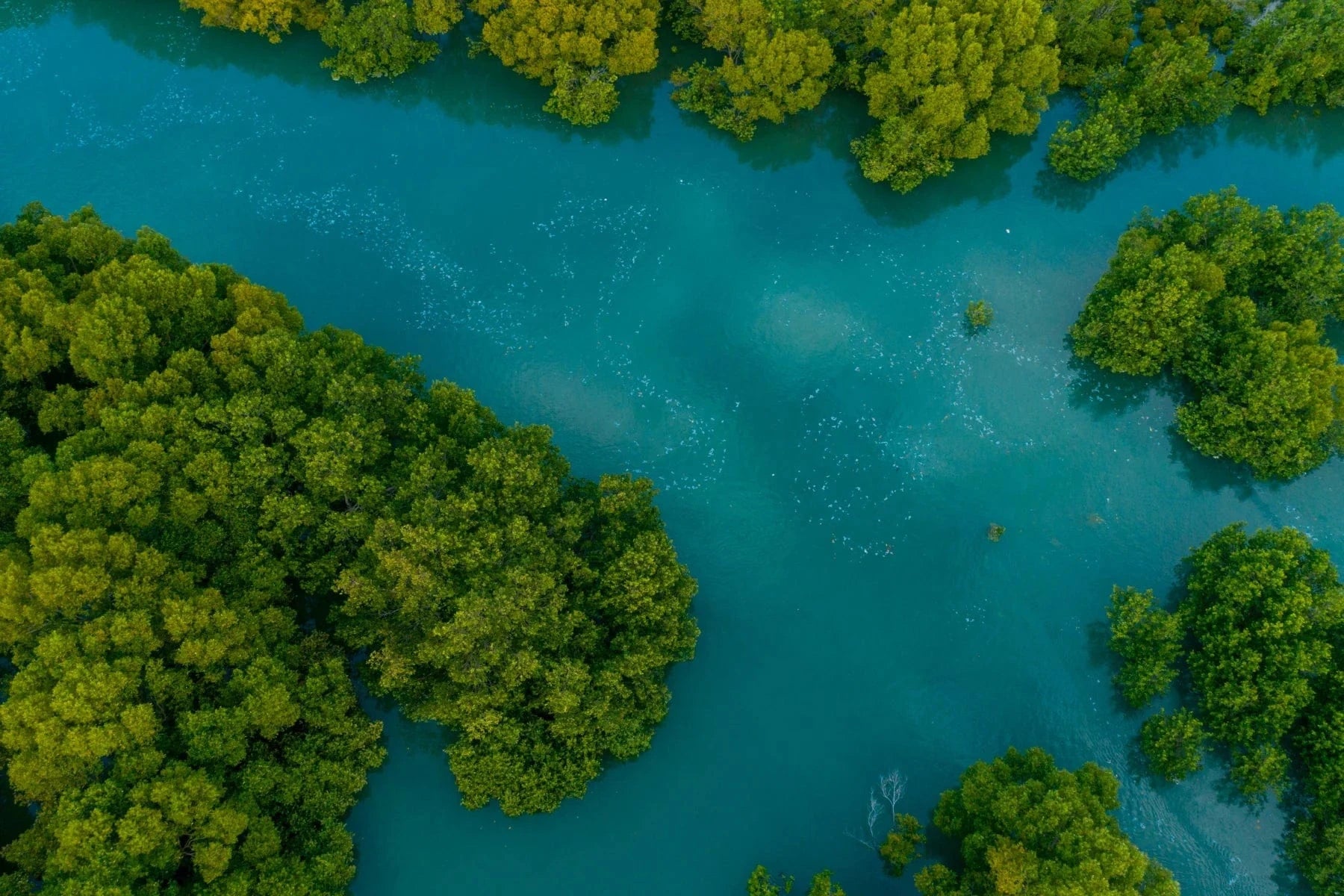
5. How do mangroves help mitigate climate change?
Mangrove forests cover just 0.1% of the planet’s surface but store up to 10x more carbon per hectare than terrestrial forests. How? Mangrove trees store carbon in their leaves, and when those leaves fall off and sink into the mud and silt, they become what is known as blue carbon (carbon that is stored underwater.)
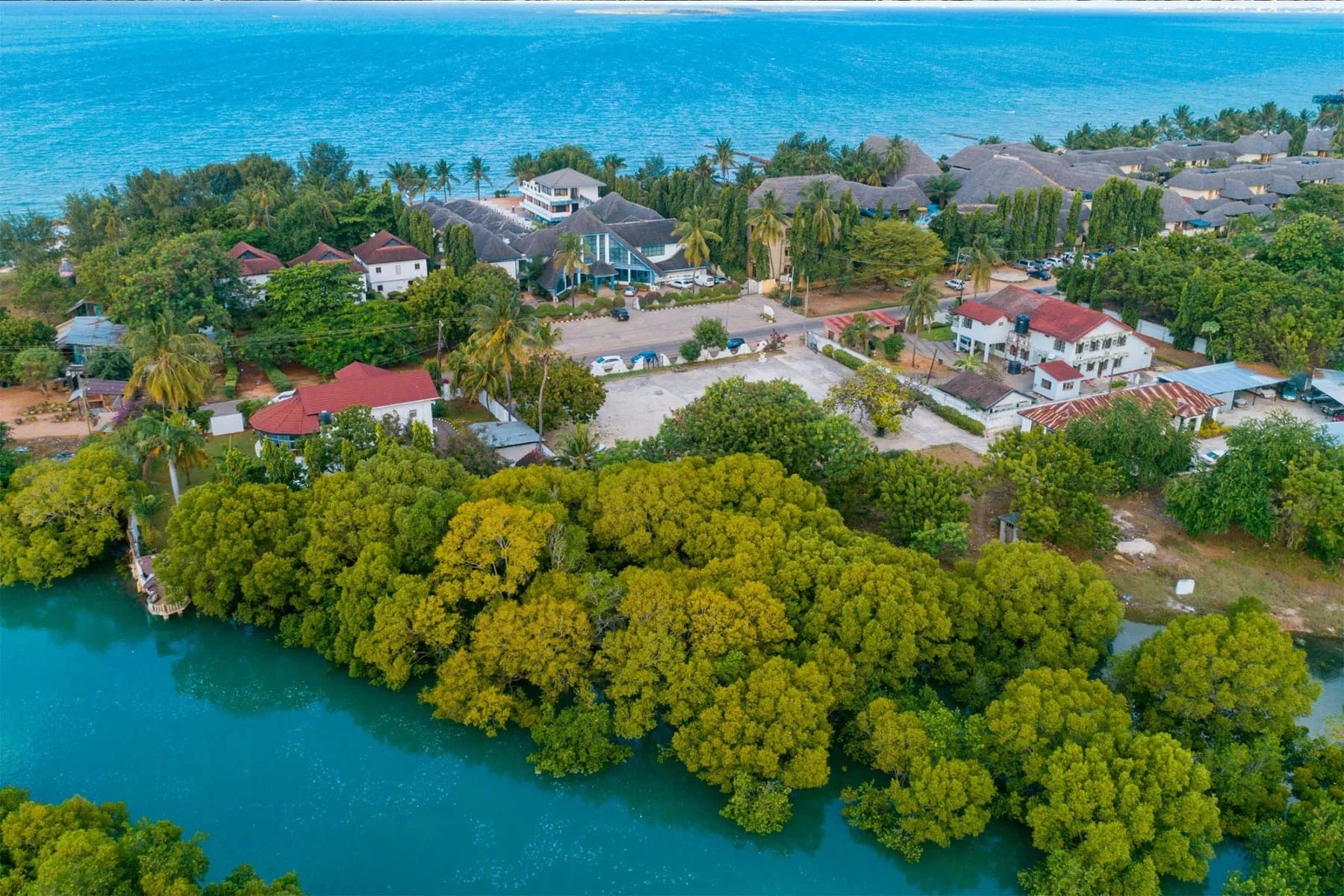
6. How do mangrove trees protect coastal communities?
Mangroves act as natural barriers against rising tides and storm surges. A wave passing within 100 meters of a mangrove forest can lose around 2/3 of its energy. Experts estimate that mangrove ecosystems prevent more than $65 billion in property damages and reduce flood risks for around 15 million people every year.
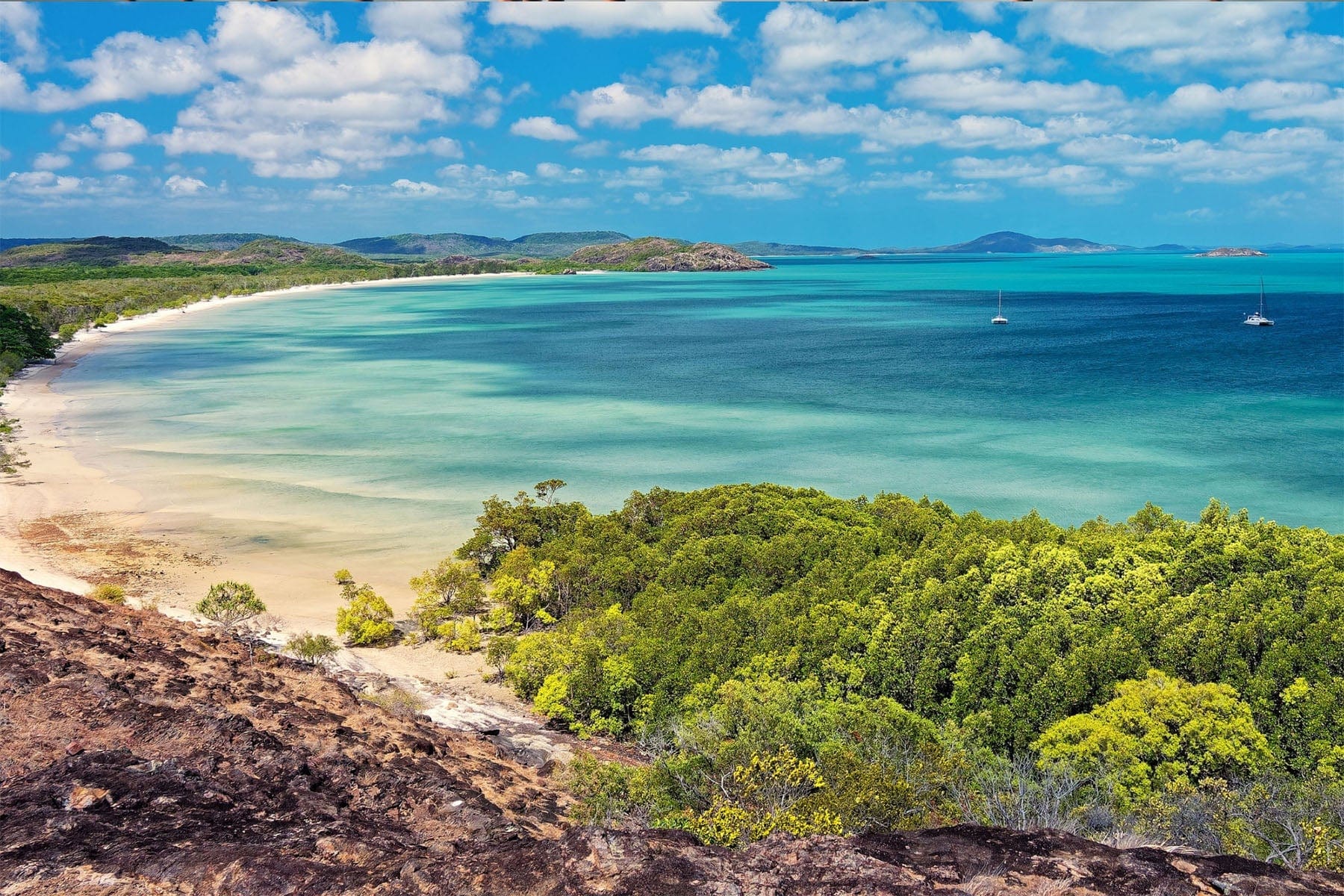
7. Where do mangroves grow in the world?
Mangrove forests are more ubiquitous than you might think. 123 tropical and subtropical countries have mangroves growing along their coastlines and estuaries. Although this equates to less than 1% of global tropical forest cover, mangroves provide ecosystem services to an estimated 2.4 billion people that live within 100km of coastlines.
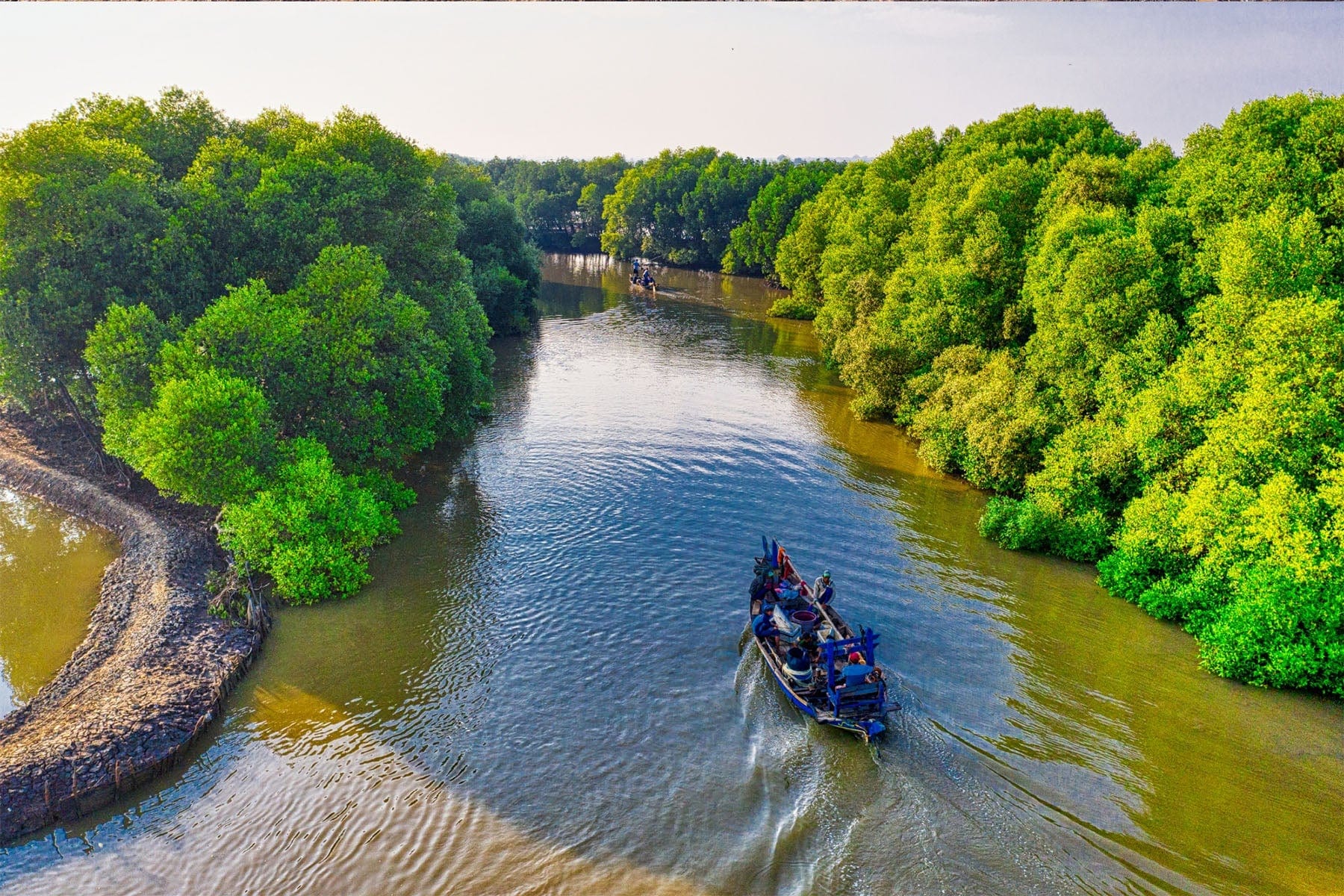
8. Where do most of the world's mangroves grow?
The Asia Pacific region contains half of the world's mangrove forests. Global maps released by the Global Mangrove Watch in 2020 showed approximately 147,539 km2 of mangrove forest in the world — with 51% in the Asia Pacific, 29% in the Americas, and 20% in Africa.
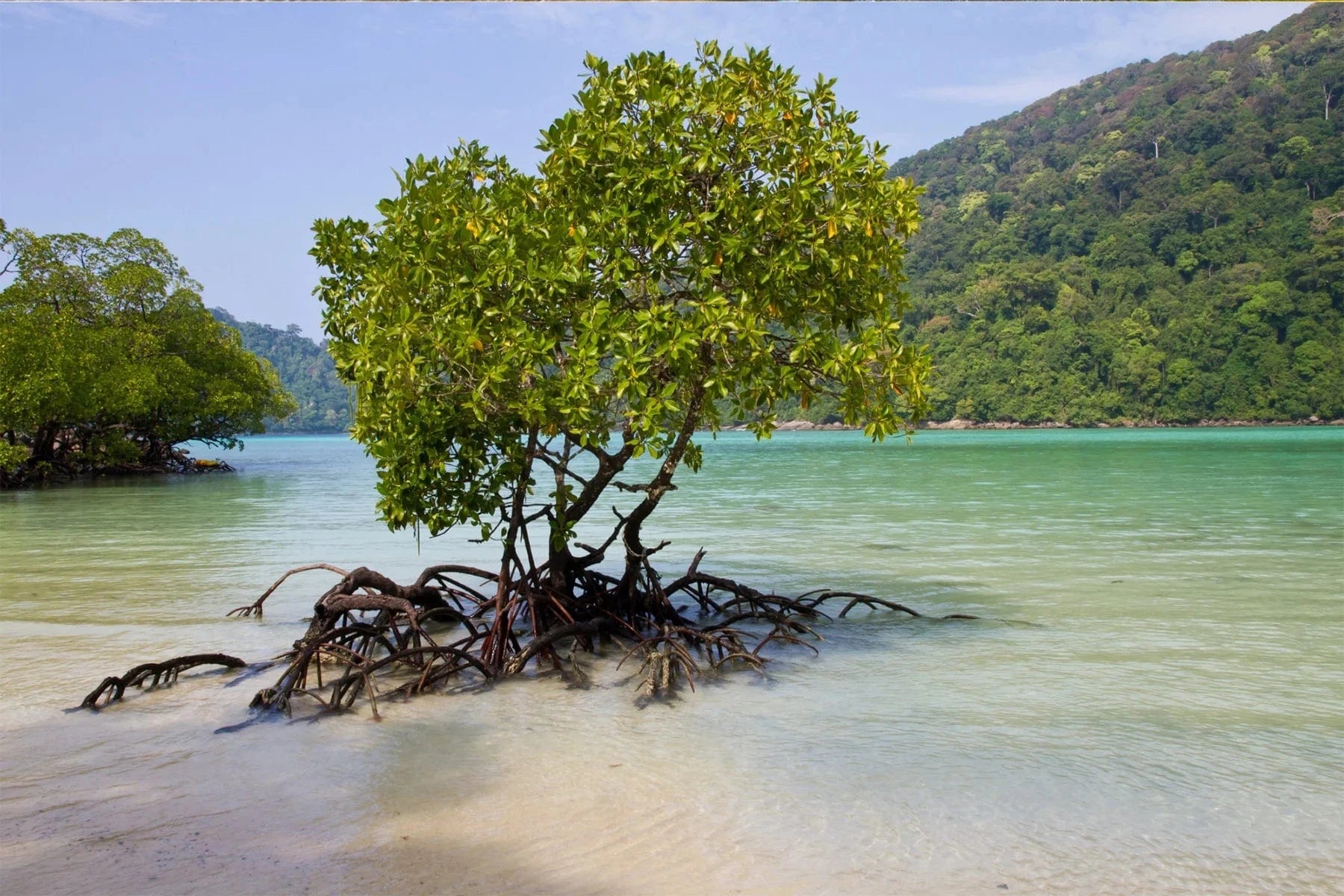
9. Are mangroves disappearing?
Between 1996-2020, 3.4% (5,245km2) of global mangrove cover was lost. In 2023, the UN Environment Programme reported that global mangrove loss had stabilized — and some areas have regained forest cover. This is great news, but mangroves are still threatened by persistent degradation, pollution, and biodiversity loss.
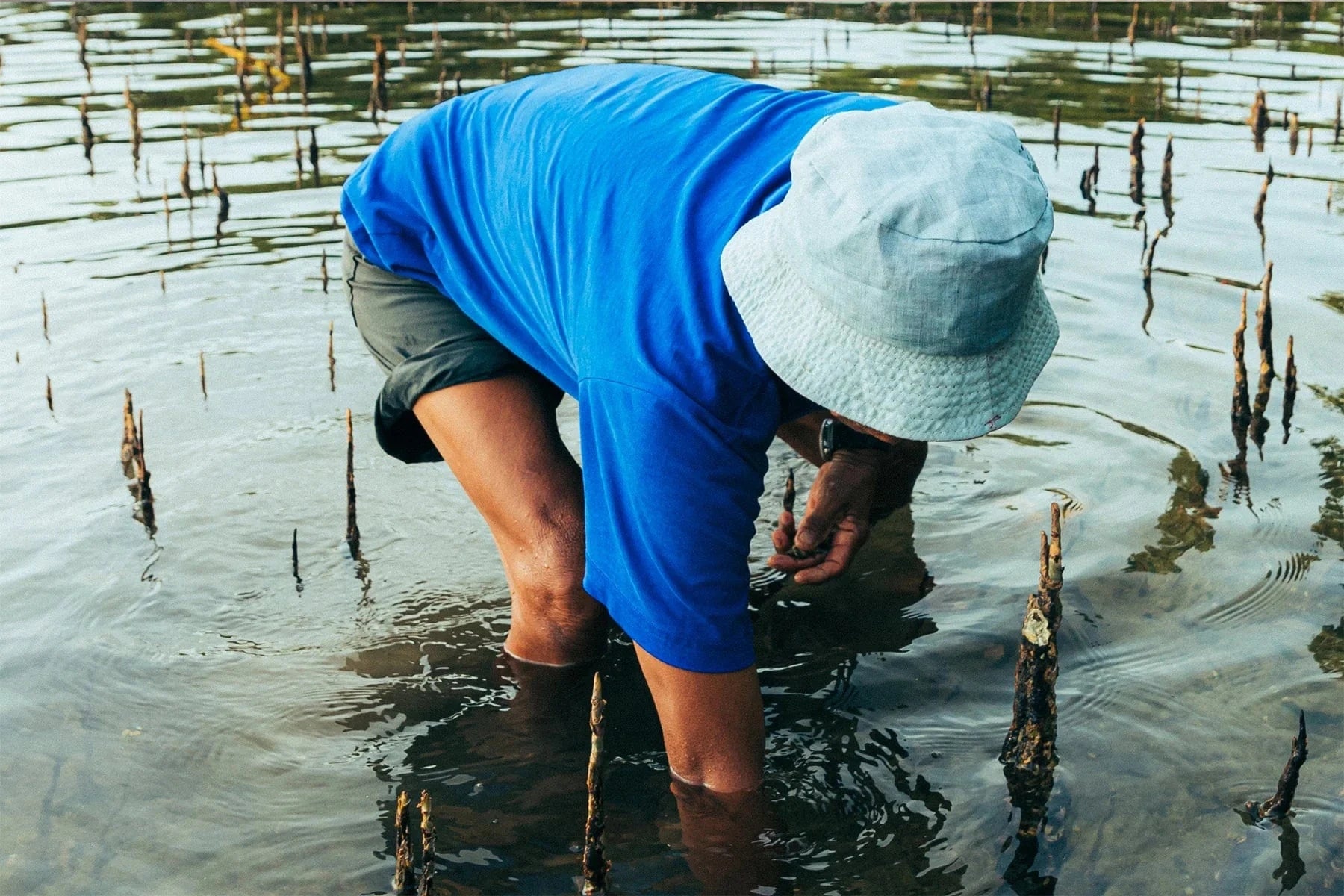
10. Why are mangroves so important to the global food supply?
80% of global fish catch is in some way dependent on mangrove forests. If you like fish on your dinner plate then you can probably thank the mangroves. Whether they are spawning grounds for ocean bound fish, habitat for shrimp, or even an important source of algae, fruit, and salt, mangroves are a vital part of the global food supply.
Want to Learn More About Mangroves? Watch Our Video!
Mangrove forests are one of the most important coastal ecosystems for storing carbon, providing critical habitat for thousands of species, and protecting coastal communities. They have many interesting adaptations that allow them to thrive in a harsh, unforgiving environment — including the ability to filter saltwater and strong, stilt-like roots that stabilize them in soft mud and sand.
For mangrove trees, sea level rise, farming, development, and aquaculture such as shrimp farming all pose major threats. Sea level rise in particular is limiting mangrove habitat and its climate change resilience: while they can migrate further inland, development of coastal areas limits where they can grow.
The benefits of mangroves are immense, and as our planet rapidly changes, planting them is becoming more important than ever. One Tree Planted is actively supporting mangrove restoration around the world. Want to help protect these magnificent trees? Support reforestation today!
Get news, updates, & event Info delivered right to your inbox:
Related Posts
Why Trees Are Great Holiday Gifts
04/12/2025 by Meaghan Weeden
Real vs. Fake Christmas Trees: Which is Better For the Environment?
20/11/2025 by Meaghan Weeden
8 Reasons to be Grateful for Trees This Thanksgiving
18/11/2025 by Meaghan Weeden
Popular On One Tree Planted
What Causes Deforestation?
10/07/2025 by Meaghan Weeden
8 Amazing Bamboo Facts
14/01/2025 by Meaghan Weeden
Inspirational Quotes About Trees
09/01/2025 by Meaghan Weeden
Fundraising Disclosures

Be Part of the
Restoration Movement
The Grove is more than just a monthly giving program: it's a vibrant community of individuals who are dedicated to reforestation and environmental restoration on a global scale.
As a member of The Grove, you affirm your commitment to restoring forests, nurturing biodiversity, and fostering positive global change.





